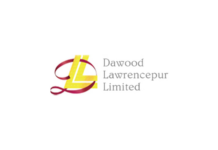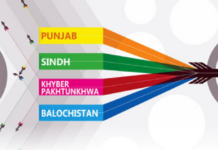As someone who has been part of the Pakistani business landscape for the last four decades, I have witnessed the evolution of local businesses from single business entities to diversified corporate groups. In this course, I have seen several of them often face a strategic choice: should they focus on growing their core business or diversify into new areas?
While the diversified conglomerate facades always seem to shine brighter, I have been curious about their chosen growth strategies and whether these have yielded optimal results for them and the country.
To explore this, I examined counterfactual scenarios for a few large Pakistani business groups. I imagined how they might have evolved if they had focused on their core businesses rather than diversifying. This comparison of the actual path with a hypothetical focus strategy draws valuable lessons for the future.
But first, some theory!
While there is no one-size-fits-all strategy, commercial organisations would do well to focus on their core businesses if untapped market potential still exists and the core product or service has room for growth. This could involve expanding into new geographies and different customer segments to improve market share.
The core must remain in focus when you have a strong competitive advantage, unique capabilities, a brand, or cost advantage that can be scaled and expanding the core generates higher or more predictable returns compared to diversification.
Focus builds strength and avoids spreading resources too thin. It also deepens expertise inyour main business.
On the other hand, you would pursue diversification when the core market is saturated or stagnant, growth slows, margins compress, or customer needs shift. When concentration risk is high, there is overdependence on one product, customer group, or geography, which poses long-term risk.
You also need to have transferable capabilities, such as skills, technologies, or distribution channels, that can be leveraged in adjacent markets. Additionally, customer needs are evolving, and new problems your customers face can’t be solved with your current offering. Finally, you have the capital and management capacity to handle new ventures without weakening the core.
Management gurus would advise you that it is always better to focus on your core first, then diversify. Most successful companies exploit their core until marginal growth slows, then move into adjacencies (McKinsey’s ‘three horizons’ model). When you decide to diversify, it is always better to do related diversification first. Companies usually succeed when new areas are linked to existing strengths.
This brings us back to looking at some specific examples of the evolution of local Pakistani groups.
Let’s start with Nishat Group, which began as a textile company and later diversified into cement, power, banking, insurance, and automobiles. Counterfactually, if Nishat had concentrated on textiles, it could have become one of the largest integrated textile and apparel exporters in South Asia. They might have even scaled into global fashion retail, like Inditex (Zara) or Arvind (India). This approach could have hedged against local macro shocks through stronger export revenues.
Interestingly, Nishat pursued diversification into banking and energy, which provided steadier cash flows, even though the regulatory risk increased.
Engro Corporation started as a fertiliser company and later diversified into petrochemicals, energy, food, and telecom infrastructure. If Engro had doubled down on fertilisers and Agri-inputs, it could have become a regional agribusiness leader, exporting into South/Central Asia and Africa. They would have also had the potential to move up the value chain into Agri-tech, seeds, and biotechnology earlier.
Like Nishat, Engro diversified into energy for steadier cash flows but increased its regulatory exposure!
Packages Group, initially focused on paper and packaging, later diversified into consumer goods (Nestle Pakistan JV) and financial services. If Packages had expanded globally, it could have become a regional packaging giant, entering GCC, Central Asia, and Africa. This expansion might have also led to the development of a ‘Tetra Pak–like’ multinational from Pakistan.
However, the company could not scale regionally and therefore decided to grow in banking and insurance for steady cash flows.
While I cannot provide this analysis for other local groups in this space, they have likely followed similar trajectories.
For comparison, though, it is interesting to examine Indian groups like Reliance, Tata, and Mahindra. Their growth paths suggest that Indian groups tend to diversify earlier and more aggressively due to larger markets and deeper capital pools. In addition, successful market reforms have provided strong tailwinds to domestic opportunities.
In contrast, Pakistani groups diversify later and incrementally, constrained by financing, market size, and governance style. Diversification in Pakistan often occurs reactively, responding to regulatory changes such as privatisation.
The upside of focusing on the core would have been the potential for the above-mentioned Pakistani firms to establish globally competitive champions in sectors such as textiles, agribusiness, and packaging. Every rupee invested outside the core was a rupee not invested in scaling exports or global positioning.
The downside of focus would have been the risk of stagnation during downturns without diversification buffers. Currency shocks, political instability, and the energy crisis made single-sector bets risky, necessitating diversification as a hedge against shocks in any one industry.
The bottom line for Pakistani groups is that diversification ensured survival and steady profits, but it also capped their global scale ambitions. For most family groups, the goal was never to build scale businesses but to preserve wealth and stability across generations. Diversification achieved this better than pure focus.
In essence, Indian groups diversified to seize opportunities, while Pakistani groups diversified to manage risk.
For the next generation of Pakistani business leaders, the above analysis points to certain key lessons.
- Instead of only managing risk, Pakistani groups should pursue growth opportunities and move early into closely related adjacencies where they can leverage existing assets and capabilities.
- Build institutional depth early. Diversification is harder when governance remains fully family-centric. Pakistani groups need to professionalise boards, finance, and strategic management early, so they are structurally ready for opportunities.
- Think regional, not just domestic. Given the country’s relatively smaller market size, local groups should look at regional adjacencies (Middle East, Central Asia, Africa, etc.) earlier in their journey. Cross-border expansion can substitute for a limited domestic scale.
- Think first about scaling the strongest core businesses internationally.
- Over-diversifying domestically will make you a small international/regional player in a number of markets






















